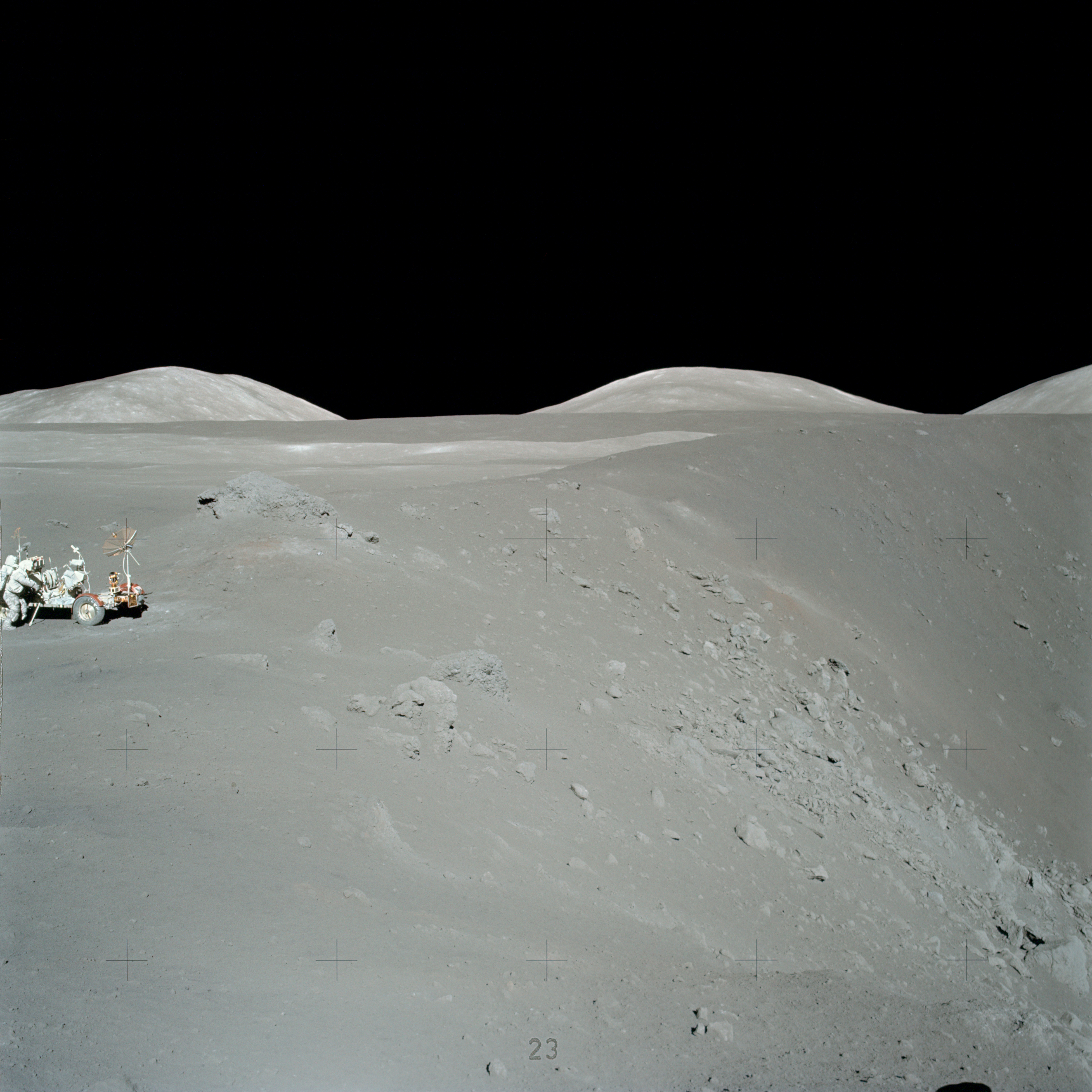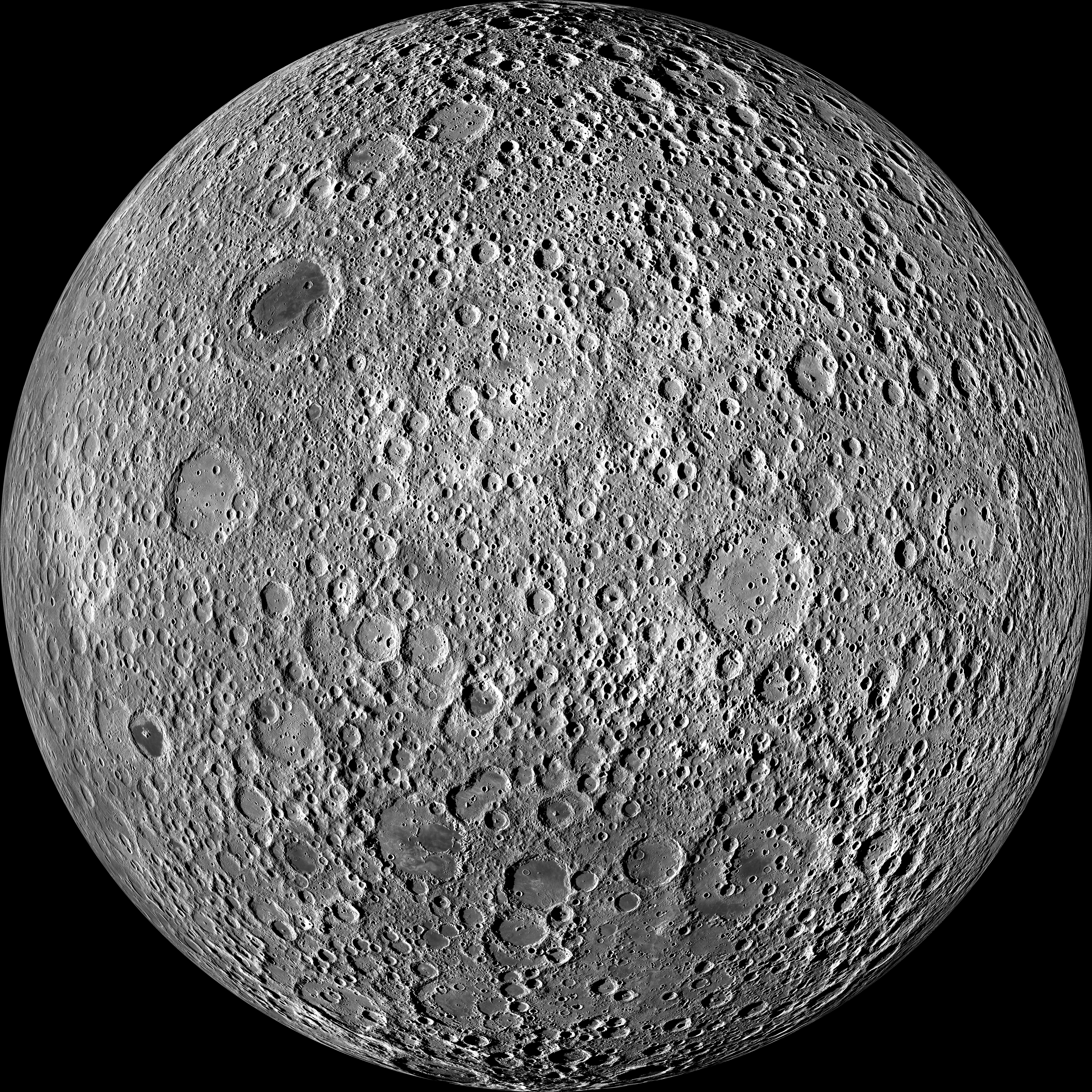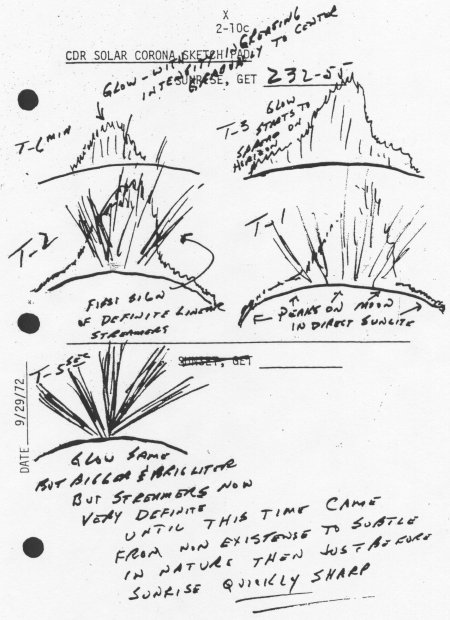|
Chang'e 6
Chang'e 6 () is a planned robotic Chinese lunar exploration mission that is expected to launch in 2025 and perform China's second sample return mission. Like its predecessors, the spacecraft is named after the Chinese moon goddess Chang'e. Overview The Chinese Lunar Exploration Program is designed to be conducted in fourChang'e 4 press conference CNSA, broadcast on 14 January 2019. phases of incremental technological advancement: The first is reaching lunar orbit, completed by Chang'e 1 in 2007 and Chang'e 2 in 2010. The second is landing and roving on the Moon, as did in 2013 and |
Sample Return Mission
A sample-return mission is a spacecraft mission to collect and return samples from an extraterrestrial location to Earth for analysis. Sample-return missions may bring back merely atoms and molecules or a deposit of complex compounds such as loose material and rocks. These samples may be obtained in a number of ways, such as soil and rock excavation or a collector array used for capturing particles of solar wind or cometary debris. Nonetheless, concerns have been raised that the return of such samples to planet Earth may endanger Earth itself. To date, samples of Moon rock from Earth's Moon have been collected by robotic and crewed missions, the comet Wild 2 and the asteroids 25143 Itokawa and 162173 Ryugu have been visited by robotic spacecraft which returned samples to Earth, and samples of the solar wind have been returned by the robotic ''Genesis'' mission. Samples from the asteroid 101955 Bennu are en route back to Earth and are expected to arrive in September 2023. In ad ... [...More Info...] [...Related Items...] OR: [Wikipedia] [Google] [Baidu] |
Chang'e 4
Chang'e 4 (; ) is a robotic spacecraft mission, part of the second phase of the Chinese Lunar Exploration Program. China achieved humanity's first soft landing on the far side of the Moon, on 3 January 2019. A communication relay satellite, , was first launched to a halo orbit near the Earth–Moon L2 point in May 2018. The robotic lander and ''Yutu-2'' () rover were launched on 7 December 2018 and entered lunar orbit on 12 December 2018, before landing on the Moon's far side. The mission is the follow-up to Chang'e 3, the first Chinese landing on the Moon. The spacecraft was originally built as a backup for Chang'e 3 and became available after Chang'e 3 landed successfully in 2013. The configuration of Chang'e 4 was adjusted to meet new scientific and performance objectives. Like its predecessors, the mission is named after Chang'e, the Chinese Moon goddess. In November 2019, Chang’e 4 mission team was awarded Gold Medal by the Royal Aeronautical Society. In October ... [...More Info...] [...Related Items...] OR: [Wikipedia] [Google] [Baidu] |
Chinese Space Probes
Chinese can refer to: * Something related to China * Chinese people, people of Chinese nationality, citizenship, and/or ethnicity **''Zhonghua minzu'', the supra-ethnic concept of the Chinese nation ** List of ethnic groups in China, people of various ethnicities in contemporary China ** Han Chinese, the largest ethnic group in the world and the majority ethnic group in Mainland China, Hong Kong, Macau, Taiwan, and Singapore ** Ethnic minorities in China, people of non-Han Chinese ethnicities in modern China ** Ethnic groups in Chinese history, people of various ethnicities in historical China ** Nationals of the People's Republic of China ** Nationals of the Republic of China ** Overseas Chinese, Chinese people residing outside the territories of Mainland China, Hong Kong, Macau, and Taiwan * Sinitic languages, the major branch of the Sino-Tibetan language family ** Chinese language, a group of related languages spoken predominantly in China, sharing a written script (Chinese c ... [...More Info...] [...Related Items...] OR: [Wikipedia] [Google] [Baidu] |
Sample Return Missions
Sample or samples may refer to: Base meaning * Sample (statistics), a subset of a population – complete data set * Sample (signal), a digital discrete sample of a continuous analog signal * Sample (material), a specimen or small quantity of something * Sample (graphics), an intersection of a color channel and a pixel * SAMPLE history, a mnemonic acronym for questions medical first responders should ask * Product sample, a sample of a consumer product that is given to the consumer so that he or she may try a product before committing to a purchase * Standard cross-cultural sample, a sample of 186 cultures, used by scholars engaged in cross-cultural studies People *Sample (surname) * Samples (surname) * Junior Samples (1926–1983), American comedian Places * Sample, Kentucky, unincorporated community, United States * Sampleville, Ohio, unincorporated community, United States * Hugh W. and Sarah Sample House, listed on the National Register of Historic Places in Iowa, United ... [...More Info...] [...Related Items...] OR: [Wikipedia] [Google] [Baidu] |
Missions To The Moon
As part of human exploration of the Moon, numerous space missions have been undertaken to study Earth's natural satellite. Of the Moon landings, Luna 2 of the Soviet Union was the first spacecraft to reach its surface successfully, intentionally impacting the Moon on 13 September 1959. In 1966, Luna 9 became the first spacecraft to achieve a controlled soft landing, while Luna 10 became the first mission to enter orbit. Between 1968 and 1972, crewed missions to the Moon were conducted by the United States as part of the Apollo program. Apollo 8 was the first crewed mission to enter orbit in December 1968, and it was followed by Apollo 10 in May 1969. Six missions landed humans on the Moon, beginning with Apollo 11 in July 1969, during which Neil Armstrong became the first person to walk on the Moon. Apollo 13 was intended to land; however, it was restricted to a flyby due to a malfunction aboard the spacecraft. All nine crewed missions returned safely to the Earth. While the ... [...More Info...] [...Related Items...] OR: [Wikipedia] [Google] [Baidu] |
Hainan Island
Hainan (, ; ) is the smallest and southernmost province of the People's Republic of China (PRC), consisting of various islands in the South China Sea. , the largest and most populous island in China,The island of Taiwan, which is slightly larger, is claimed but not controlled by the PRC. It is instead controlled by the Republic of China, a ''de facto'' separate country. makes up the vast majority (97%) of the province. The name means "south of the sea", reflecting the island's position south of the Qiongzhou Strait, which separates it from Leizhou Peninsula. The province has a land area of , of which Hainan the island is and the rest is over 200 islands scattered across three archipelagos: Zhongsha, Xisha and Nansha. It was part of Guangdong from 1950–88, after which it resumed as a top-tier entity and almost immediately made the largest Special Economic Zone by Deng Xiaoping as part of the then-ongoing Chinese economic reform program. Indigenous peoples like ... [...More Info...] [...Related Items...] OR: [Wikipedia] [Google] [Baidu] |
InSight
Insight is the understanding of a specific cause and effect within a particular context. The term insight can have several related meanings: *a piece of information *the act or result of understanding the inner nature of things or of seeing intuitively (called noesis in Greek) *an introspection *the power of acute observation and deduction, discernment, and perception, called intellection or noesis *An understanding of cause and effect based on the identification of relationships and behaviors within a model, context, or scenario (see artificial intelligence) An insight that manifests itself suddenly, such as understanding how to solve a difficult problem, is sometimes called by the German word '' Aha-Erlebnis''. The term was coined by the German psychologist and theoretical linguist Karl Bühler. It is also known as an epiphany, eureka moment or (for cross word solvers) the penny dropping moment (PDM). Sudden sickening realisations often identify a problem rather than solvin ... [...More Info...] [...Related Items...] OR: [Wikipedia] [Google] [Baidu] |
Schiaparelli EDM
''Schiaparelli'' EDM () was a failed Entry, Descent, and Landing Demonstrator Module (EDM) of the ExoMars programme—a joint mission of the European Space Agency (ESA) and the Russian Space Agency Roscosmos. It was built in Italy and was intended to test technology for future soft landings on the surface of Mars. It also had a limited but focused science payload that would have measured atmospheric electricity on Mars and local meteorological conditions. Launched together with the ExoMars Trace Gas Orbiter (TGO) on 14 March 2016, ''Schiaparelli'' attempted a landing on 19 October 2016. Telemetry signals from ''Schiaparelli'', monitored in real time by the Giant Metrewave Radio Telescope in India (and confirmed by ''Mars Express''), were lost about one minute from the surface during the final landing stages. On 21 October 2016, NASA released an image by the ''Mars Reconnaissance Orbiter'' showing what appears to be the lander's crash site. The telemetry data accumulated and re ... [...More Info...] [...Related Items...] OR: [Wikipedia] [Google] [Baidu] |
Lunar Water
Lunar water is water that is present on the Moon. Diffuse water molecules can persist at the Moon's sunlit surface, as discovered by NASA's SOFIA observatory in 2020. Gradually water vapor is decomposed by sunlight, leaving hydrogen and oxygen lost to outer space. Scientists have found water ice in the cold, permanently shadowed craters at the Moon's poles. Water molecules are also present in the extremely thin lunar atmosphere. Water (H2O), and the chemically related hydroxyl group (-OH), exist in forms chemically bound as hydrates and hydroxides to lunar minerals (rather than free water), and evidence strongly suggests that this is the case in low concentrations as for much of the Moon's surface. In fact, of surface matter, adsorbed water is calculated to exist at trace concentrations of 10 to 1000 parts per million. Inconclusive evidence of free water ice at the lunar poles had accumulated during the second half of the 20th century from a variety of observations sugg ... [...More Info...] [...Related Items...] OR: [Wikipedia] [Google] [Baidu] |
Lunar Exosphere
The atmosphere of the Moon is a very scant presence of gases surrounding the Moon. For most practical purposes, the Moon is considered to be surrounded by vacuum. The elevated presence of atomic and molecular particles in its vicinity compared to interplanetary medium, referred to as "lunar atmosphere" for scientific objectives, is negligible in comparison with the gaseous envelopes surrounding Earth and most planets of the Solar System. The pressure of this small mass is around , varying throughout the day, and in total mass less than 10 metric tonnes. Otherwise, the Moon is considered not to have an atmosphere because it cannot absorb measurable quantities of radiation, does not appear layered or self-circulating, and requires constant replenishment due to the high rate at which its gases get lost into space. Roger Joseph Boscovich was the first modern astronomer to argue for the lack of atmosphere around the Moon in his ''De lunae atmosphaera'' (1753). Sources One source of ... [...More Info...] [...Related Items...] OR: [Wikipedia] [Google] [Baidu] |
Lunar Regolith
Lunar soil is the fine fraction of the regolith found on the surface of the Moon. Its properties can differ significantly from those of terrestrial soil. The physical properties of lunar soil are primarily the result of mechanical disintegration of basaltic and anorthositic rock, caused by continual meteoric impacts and bombardment by solar and interstellar charged atomic particles over billions of years. The process is largely one of mechanical weathering in which the particles are ground to progressively finer size over time. This situation contrasts fundamentally to terrestrial dirt formation, mediated by the presence of molecular oxygen (O2), humidity, atmospheric wind, and a robust array of contributing biological processes. ''Lunar soil'' typically refers to only the finer fraction of lunar regolith, which is composed of grains 1 cm in diameter or less, but is often used interchangeably. Lunar dust generally connotes even finer materials than ''lunar soil''. There is ... [...More Info...] [...Related Items...] OR: [Wikipedia] [Google] [Baidu] |
Lunar Orbit Rendezvous
Lunar orbit rendezvous (LOR) is a process for landing humans on the Moon and returning them to Earth. It was utilized for the Apollo program missions in the 1960s and 1970s. In a LOR mission, a main spacecraft and a smaller lunar lander travel to lunar orbit. The lunar lander then independently descends to the surface of the Moon, while the main spacecraft remains in lunar orbit. After completion of the mission there, the lander returns to lunar orbit to rendezvous and re-dock with the main spacecraft, then is discarded after transfer of crew and payload. Only the main spacecraft returns to Earth. Lunar orbit rendezvous was first proposed in 1919 by Ukrainian engineer Yuri Kondratyuk, as the most economical way of sending a human on a round-trip journey to the Moon. The most famous example involved Project Apollo's command and service module (CSM) and lunar module (LM), where they were both sent to a translunar flight in a single rocket stack. However, variants where the landers ... [...More Info...] [...Related Items...] OR: [Wikipedia] [Google] [Baidu] |


.jpg)





